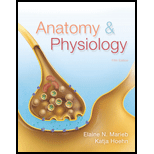
Concept explainers
Summarize the four key points of the cell theory.
To review:
The summarization of the four key points of the cell theory.
Introduction:
The cell is the smallest living unit known, comprising all the necessary parts for survival. In the human body, the cell number and types vary majorly in size, shape, and function. They vary in length too. Their function is a reflection of the shape they hold. Yet, they all have the same basic structure and functions.
Explanation of Solution
Cell research, since the late 1800s, has provided the four wide concepts that are collectively summarized as the “cell theory.” According to this theory, the four key points are as follows:
1. A cell is considered as the basic structural and functional unit found in all living organisms. This means it is found in all the organisms, irrespective of their size and shape. Viruses are an exception to this rule as they only consist of genetic material, surrounded by a protein coat. This is the reason they are considered as nonliving organisms when they are not present in any host.
2. Any activity of a living organism fully depends on the cells’ individual activities as well as their combined ones (when packed into tissues, and further, into organs and organsystems).
3. The shapes or forms of cells and the number of subcellular structures dictate their biochemical activities, as per the principle of complementarity of structure and function.
4. New cells arise from old ones. This happens after the preexisting cells undergo cell division, along with the division of their genetic material.
Therefore, it can be concluded that cells are the basic unit of a living organism. The properties of life are equivalent to the cell’s properties. Thus, it can be said that loss of cellular homeostasis will result in disease; virtually, every disease is a result of cellular damage or loss.
Want to see more full solutions like this?
Chapter 3 Solutions
Anatomy & Physiology
 Human Physiology: From Cells to Systems (MindTap ...BiologyISBN:9781285866932Author:Lauralee SherwoodPublisher:Cengage Learning
Human Physiology: From Cells to Systems (MindTap ...BiologyISBN:9781285866932Author:Lauralee SherwoodPublisher:Cengage Learning Biology Today and Tomorrow without Physiology (Mi...BiologyISBN:9781305117396Author:Cecie Starr, Christine Evers, Lisa StarrPublisher:Cengage Learning
Biology Today and Tomorrow without Physiology (Mi...BiologyISBN:9781305117396Author:Cecie Starr, Christine Evers, Lisa StarrPublisher:Cengage Learning Human Biology (MindTap Course List)BiologyISBN:9781305112100Author:Cecie Starr, Beverly McMillanPublisher:Cengage Learning
Human Biology (MindTap Course List)BiologyISBN:9781305112100Author:Cecie Starr, Beverly McMillanPublisher:Cengage Learning



